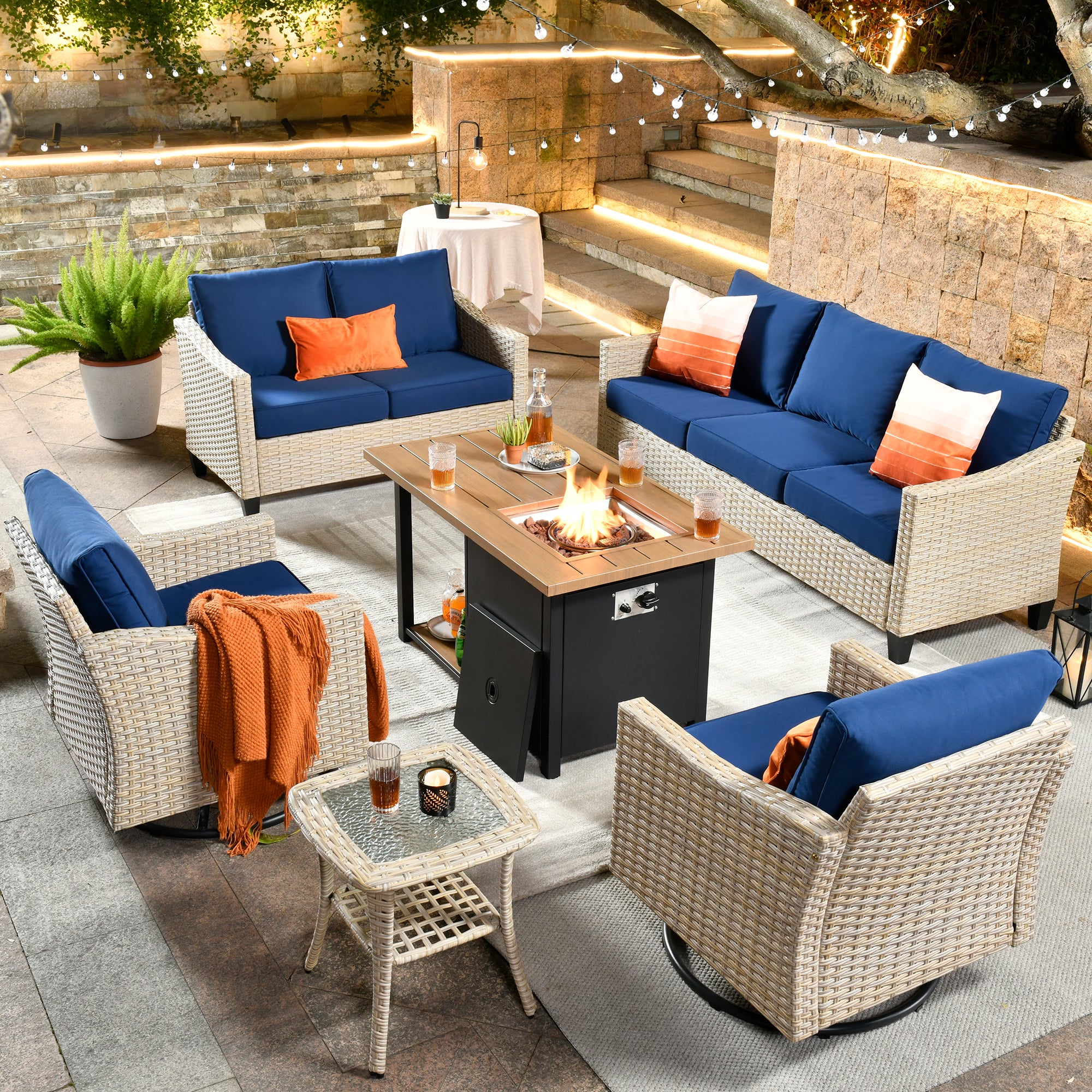Navigation
- Introduction
- Choosing Durable Materials
- Secure Assembly and Attachment
- Designing for Stability and Comfort
- Designing Furniture to Survive Earthquakes
- Conclusion
Introduction
Living in an earthquake country means preparing for the inevitable tremors. But securing your patio furniture doesn't have to sacrifice style. This article provides tips for designing durable, resilient furnishings through strategic engineering and aesthetics.
Whether entertaining guests or unwinding with loved ones, the outdoors should be an oasis - even during a quake. Nonetheless, furniture must withstand violent shaking to protect investments and safety. Balancing these needs seems complex. However, the following insights distill principles for constructing pieces enduring the earth's rumblings gracefully.
Choosing Durable Materials
When designing furniture meant to withstand seismic forces, material selection is paramount. The right materials form the foundation to safely accentuate any style through numerous shakes.
Cast Aluminum
Cast aluminum, married with a thermoset powder coating, creates an impervious layer guarding against scratches, corrosion, and weather damage. Lightweight and robust, cast aluminum retains rigidity through quakes while its cool hues complement environments.
Steel
Steel, when of suitable thickness/grade and properly assembled, is an excellent material for earthquake-resistant outdoor furniture. Its high strength-to-weight ratio and ability to absorb vibration/flexing without breaking make steel very durable. Powder-coated steel is also rust-resistant. Quality steel frames securely fastened together can withstand powerful quakes without issue. Out of these three materials, steel was rated as the best option for withstanding earthquakes.
With foundations of stability in place, let creativity take the helm in crafting masterpieces that welcome throughout nature's tumults.
Secure Assembly and Attachment
Once durable materials are chosen, anchoring pieces together withstand seismic activity. Proper reinforcement completes the quake-proof foundation for withstanding shakes gracefully.
Securing Connections:
- Lag screws and bolts hold joints with lock washers and dome nuts
- Stress tests validate flexibility instead of fracture potential
- Safety cables prevent detachable from 'twirling' during quakes
Stabilizing Furnishings:
- Lag bolts rooted through wooden legs steady four-legged fixtures
- Embedded anchors moor stone/concrete with immovable solidity
- Larger pieces require even junction fortitude. Anchoring welds ensembles reliably as one unit through earthquakes.
Whether joining or grounding, these tried techniques lock assemblies while permitting natural give, leaving furniture fixtures unfazed come the next surge. Subtle reassurance completes the quake-ready whole through steadfast yet pliable reinforcement.
Designing for Stability and Comfort
When making furniture, design helps with earthquake safety in user-friendly ways. Chairs and sofas that sit low and wide naturally won't tip over as easily as skinny, tall ones would.
Curvy, flowing shapes mimic how nature moves. They flex during tremors rather than breaking sharply at joints. Furniture with open, airy frames is light but still strong, thanks to testing.
Shapes like triangles, squares, and rectangles guide shaking motions around the furniture along sturdy angles. This keeps everything intact while looking great.
The goals are to withstand earthquakes comfortably and protect people's nice things for enjoying the outdoors. Form brings together function and aesthetics through clever construction, disguising resilience as art. The result is beautifying spaces safely through nature's rhythms.
Whether lounging or dining, reinforced yet relaxed furnishings safeguard ease and luxury as earth's mighty forces roll on. Clever designs balancing brace and grace cultivate shelter sturdy in both structure and spirit.
Designing Furniture to Survive Earthquakes
When it comes to making patio furniture stay put during earthquakes, the materials you choose and how everything fits together are very important. This article will give you tips for building furniture strong enough not to break apart when the ground is shaking. We'll also talk about how to make it look nice.
Picking Sturdy Stuff
Some materials hold up better than others in quakes. Aluminum that's poured into molds stays strong without rusting. And iron that's pressed and shaped gets tougher with time as it changes color. These will last through quakes better than rattan or simple wood furniture that can split apart. You can also mix materials, which combines what each does best to make super sturdy pieces.
Putting it All Together
- Once you choose long-lasting materials, attaching all the parts securely finishes the earthquake-proof frame. Hardware like screws, nuts, and bolts that don't rust make connections stronger.
- Testing connections before final assembly proves they won't break during jostling. Some parts bend to avoid cracking. Items that can detach, like lights or side tables, get tie-downs to stay put or remove easily when not shaking.
Anchoring to Patios and Decks
More oversized furniture gets welded as one unit to outdoor areas using deck lag bolts for wood or embedded anchors for stone/concrete surfaces. This means absolutely no movement, no matter what.
The Look
While preparing for quakes, style should not be sacrificed. Weathered metal elevates its rugged charm. Smooth undulating shapes appear sturdy but not fragile. Hidden joining allows furniture to seem resilient through the seasons. Attuned designs resonate naturally with nature's forces.
Conclusion
As seismic zones expand, earthquake-considerate design nurtures refuge from uncontrollable forces. Strategic material application, engineering, and design resiliently furnish stylish spaces protected for future generations. Safety and sustainability interweave aesthetic threads, strengthening social fabric with the natural environment's durable dialogue. Readers are invited to implement discussed strategies, extending outdoor oasis enjoyment through shaking Earth's conversation.







